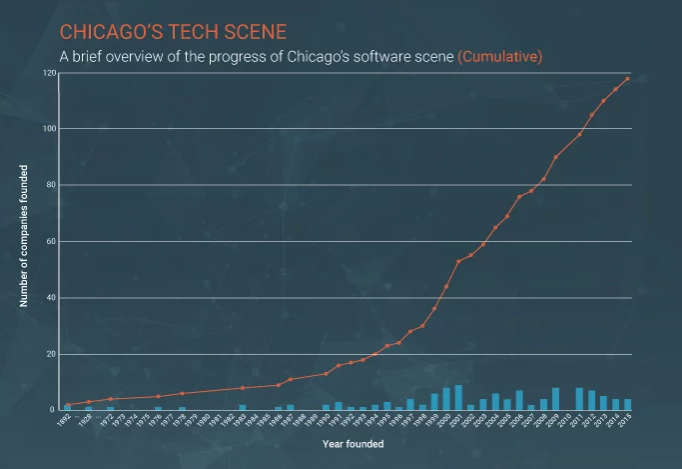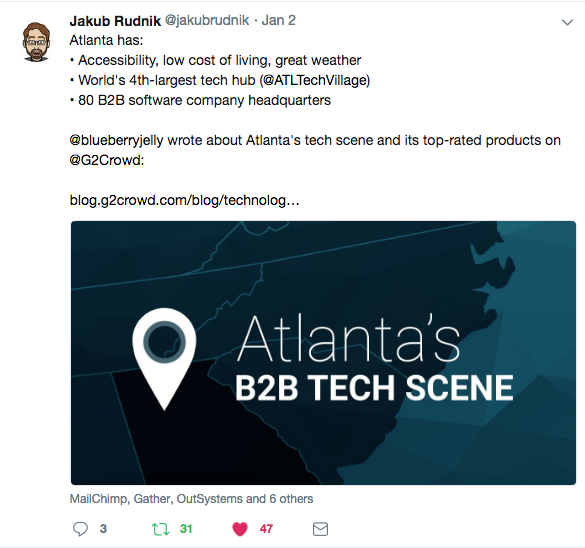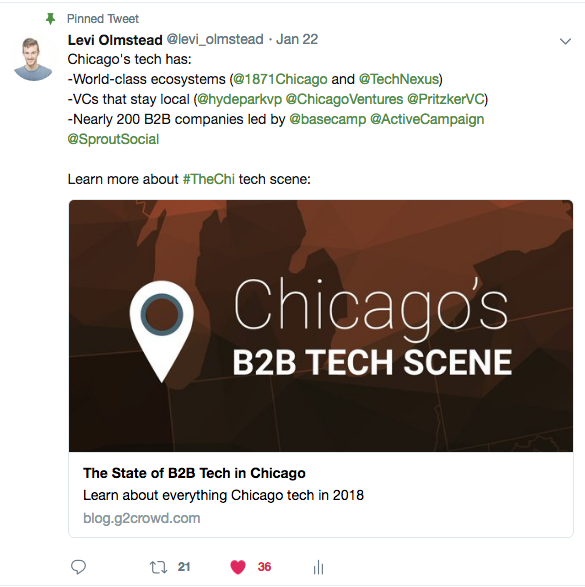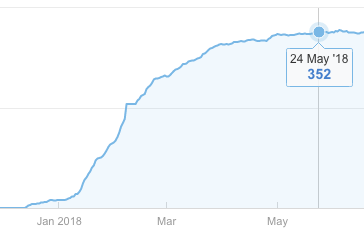Table of Contents
In September 2017, we identified a problem. Despite being a high-growth company for nearly five years, our website traffic (overall and organic) at G2 Crowd had become stagnant, even dropping, and new content wasn’t helping our cause. We couldn’t beat certain brands – particularly, our important competitors – in certain areas.
After a quick audit to determine what could be going wrong, we realized our new backlink and domain acquisition strategy was the problem. Specifically, we didn’t have one – and our competitors did.
Identifying Our Backlink Gap
Taking a look at who was beating us in SERP, we saw that two main brands were hammering us on overall domains linking to them.
One of these brands (let’s refer to it as Competitor 1) was a relatively new website that had acquired a ton of new domains quite quickly. We were shocked that this new website had stolen a big chuck of our SERP out of nowhere, but we quickly realized that its edge on us was the sheer number of domains linking to its site. In a brief period of time, it had actually surpassed G2 Crowd in total number of dofollow domains linking to its site.
The other brand (let’s refer to it as Competitor 2) was a site that has been around much longer than we have, and at the time had nearly three times the overall amount of dofollow domains linking to it.
As of October 2017:
- G2 Crowd had a total of 3,835 dofollow domains
- Competitor 1 had 4,030 (105% of G2 Crowd)
- Competitor 2 had 10,011 (261% of G2 Crowd)
As of September 2018, G2 Crowd had 6,223 (62% year-over-year growth) do-follow domains; we surpassed (and gapped) Competitor 1, which stood at 5,179 (83% of G2 Crowd), and significantly closed the gap on Competitor 2, which sat at 12,800 (205% of G2 Crowd).
Our growth in dofollow domains didn’t happen overnight. But how did it begin? With a dedicated strategy and a focus on developing new campaigns with backlinks in mind.
Here is what we did.
Identifying an Opportunity Through Ahrefs Research
In October 2017, with our traffic waning, our competitors beating us in backlinks, and lofty year-end goals in our sights, we needed to find strategies that we were fairly certain would work. Late on a Sunday night sitting around an apartment, three of us dug into our site data on Ahrefs. Our goal: to look for content we could replicate that would get backlinks.
We saw a pattern with our “Vanity Grids.”
The Grid is our recognizable visual quadrant that places similar software products head-to-head in their respective categories. The Vanity Grids we’d done in the past grouped products by location or event, rather than by software category (best software in Boston or at Dreamforce, for instance, rather than best CRM platform).
A few of the most backlinked pieces of content on our site were these Vanity Grids based upon a geographic location. In a way, it was a surprise to the group: If we’re being transparent, these Vanity Grid articles were downright embarrassing. They would cram dozens of product logos, from different SaaS spaces, on a Grid with no context to why they were being compared, with almost no content under the Grid.
Yet they still drove backlinks. We all know that “best of” lists drive links because they draw on the pride of the companies mentioned. Well, these were our “best of” lists.
We theorized that if we took the Vanity Grid concept and fleshed it out into large, pillar page-type reports on 25 American tech hubs and 10 countries, created quality content and an appealing design template, and used our customer review data, we could create a successful campaign that would crush new backlinks.
And it worked.
Building the Project
We’re in a special situation at G2 Crowd. Our platform has an enormous number of user-driven insights; this empowers our research team to create reports and best-of lists that are backed with high data integrity.
A main goal of our website traffic project was to acquire new domains and backlinks. But as a data-driven, users-come-first company, we needed to ensure the project continued with a high-quality and reputable series of reports that we felt comfortable releasing.
(In general, this should be a rule for all types of content production.)
Ranking products from vendors that are also customers can become a tricky (and sticky) situation. We needed to ensure the project was communicated to everyone involved, both internally and externally.
Releasing this much content also required sitting down and scheduling out releases over the course of a month. (I’m very thankful for project managers.)
All in all, this took a lot of (fun) cross-team collaboration. Here is a breakdown of responsibilities:
- The data team pulled the rankings from our database
- Our design team provided feedback on the layout, and created a theme for cover images and graphs that fit our project and style guide
- Marketing sent out vendor communications to products that made the reports
- PR worked with media outlets to acquire media coverage
- The community development team worked to reach out to companies included in the lists to acquire quotes and put together press kits for those companies to share the news (people love when you create content for them!)
- Research team members connected with industry leaders in each city for quotes and insights, and wrote the content
- Editing and publishing front-end designed each individual report in the series (believe me, this took a LOT of time)
While the entire planning and content-creation process was a huge time suck, the efforts paid off. The pieces were some of the best work our content and research teams had ever produced.

Pieces in the American tech scene series included quotes from major players in the SaaS world, timelines that were custom designed and branded by our design team, and company profiles on all the brands listed in our reports.
Promoting and Distribution: Getting Eyes on Our Campaign
As the cliche goes, “build it and they will come.” Many content marketers stress that the most important part of content marketing is creating great content, and benefits will come.
I don’t buy either of those things.
Yes, building great content is extremely important. Probably the most important aspect of content. But if no one sees that great content, who cares? Especially if you’re publishing that content on a site that doesn’t have a high domain rating. A promotional plan is the Ying to great content’s Yang.
Before our content was published, we made sure brands and influencers knew this series was happening. Our PR team pitched to business publications in each city, leading to placements such as Boston’s American Inno and Indianapolis’ TechPoint.

Our marketing team sent out vendor communications to all the companies highlighted in our reports. Included in the vendor comms was a PR kit personalized for those included in the report, including a custom badge highlighting the award, and a prewritten press release and blog announcement.
Our content team connected with influencers and tech leaders in the cities they were responsible for to gather quotes to include in their reports. Through different social media networks and our large network of software connections at G2 Crowd, we were able to gather many well-known thought leaders in different cities.
Once individual city posts went live, we had a huge social push behind them. We crafted tweets from the author of each piece of content that tagged local tech leaders, VCs, top companies and more. This led to social ecosystems grabbing hold of our content, helping us reach our geo-specific targets.


The Campaign’s Impact
The series released over the entire month of January. And once we had visibility into our campaign, the backlinks poured in. The majority came from our vendor communications campaign that included the media and PR kit.
The prewritten press releases were a hit: a win-win for everyone involved.
This strategy enabled the brands receiving recognition to promote their award, while not having to spend the time crafting the announcement. It also allowed us to select the exact anchor text and links we wanted from these domains.
In total, the campaign resulted in over 350 new domains linking to G2 Crowd. A majority of these domains included links not just to our reports, but also to what Google considers our most-valued content: category pages.

The Residual Impact
The campaign was a major success in terms of sessions, backlinks/new domains, brand engagement (specifically with brands that were previously unresponsive), and overall brand recognition.
The campaign also has had a major impact on overall organic traffic here at G2 Crowd. It’s hard to say this specific campaign can cause major bumps in organic traffic as SEO has so many varying factors, but it’s foolish to deny how this wouldn’t be a major influence (that January was by far our biggest traffic month to date).
It also allowed our content team to begin to wrap our minds around what types of content people wanted and would link to.
Our strategy has adapted and evolved over the past year. But examining our past successes, and learning how to replicate those and do them at scale, helped jumpstart our backlink strategy and rejuvenate our organic traffic growth.

 End-to-end outreach workflow
End-to-end outreach workflow



 Check out the BuzzStream Podcast
Check out the BuzzStream Podcast

